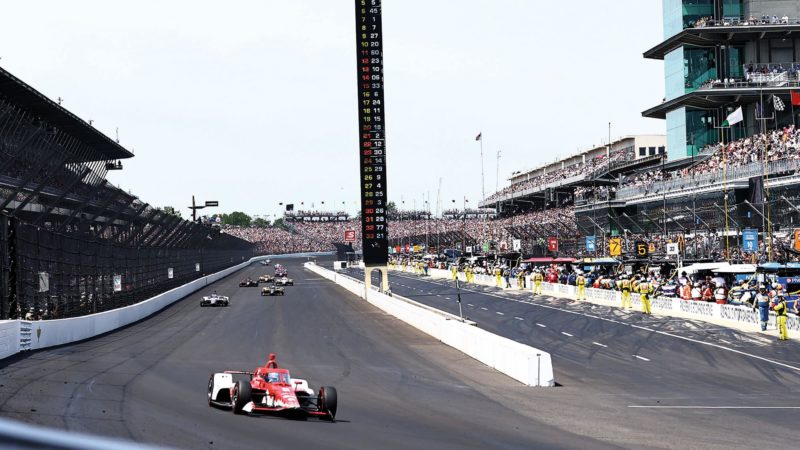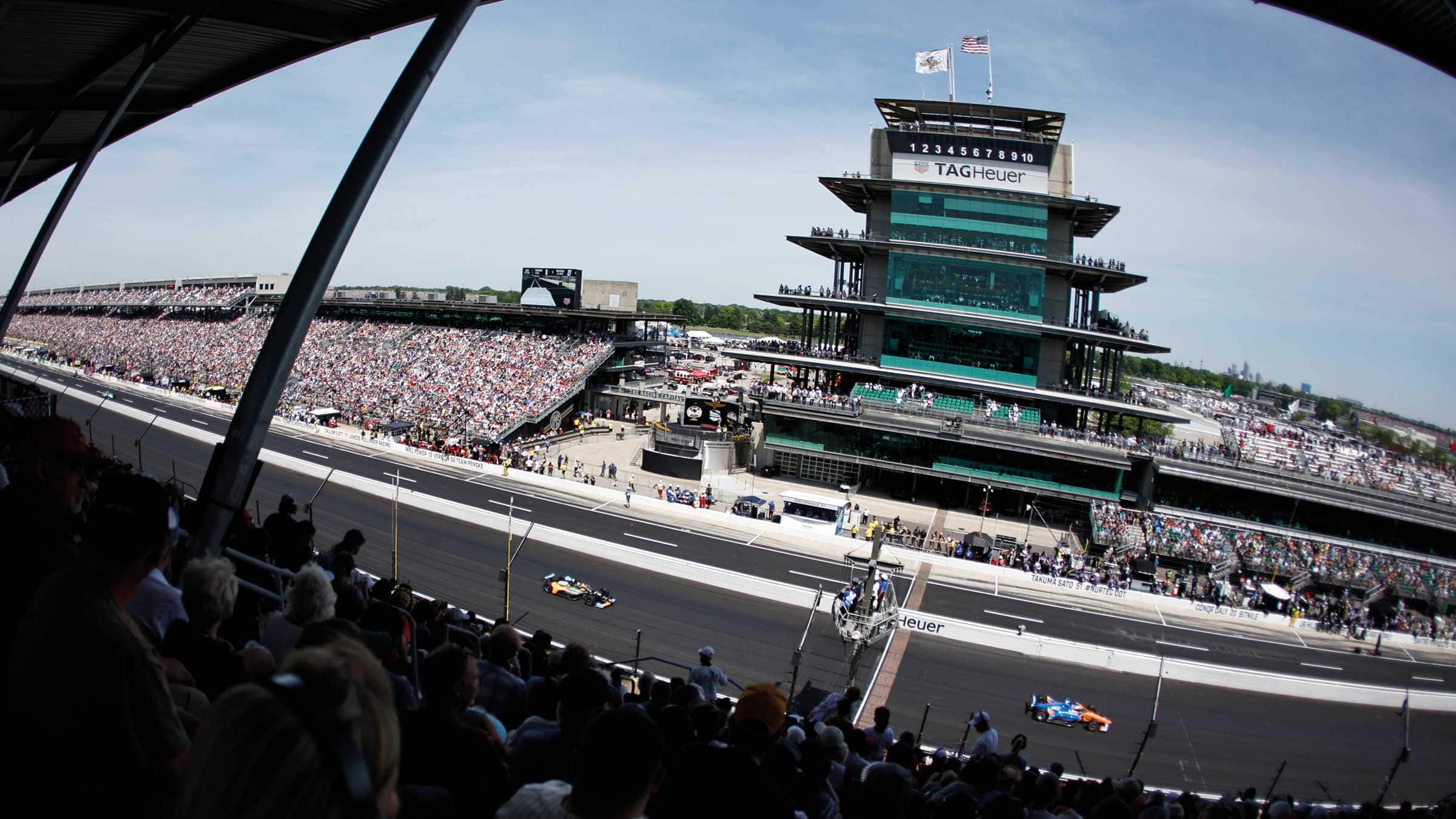On ‘Fast Friday’, the final practice ahead of the qualifying weekend, drivers continue to share the circuit, meaning track position is critical to how beneficial the session can be. In order to avoid distorting their qualifying simulations, drivers will have to avoid picking up an unwanted tow from other drivers whilst still pushing to the limit, leaving a very small window to work in with 33 other cars out on track.
On Saturday, the real tactics start when the first qualifying runs have been completed and drivers must now decide which lane to queue up in before heading out for a second run. Drivers lining up in the priority lane will generally be those toward the back of the field who have either got nothing to lose or had a particularly bad first attempt.
For example, if a driver finished 34th with their first four-lap run, they can only gain from lining up first in the priority lane and going again. However, if a driver qualified 15th, they may be better off waiting their turn. They’ll have the fallback of a midfield place whatever happens, but may not get the chance to improve if the session timer runs out before they make it to the head of the line.
Best Indy 500 qualifying sessions of the past
Even with wheel-to-wheel racing a week away, qualifying for the Indy 500 has always produced its own fair share of drama.
In 2019, Fernando Alonso and McLaren were dramatically knocked out of the running entirely by 2017 Indy Lights champion Kyle Kaiser, who beat the Spaniard by an average speed of just 0.019mph. The disappointment was mainly due to McLaren’s lack of performance, which even in the hands of Alonso, had struggled to keep up with the rest of the field and left his hopes of challenging for the triple crown in tatters.
In 1991, Willy T Ribbs became the first black driver to qualify for the Indy 500 for the first time in its 80-year history. Speaking to Motor Sport on the 30th anniversary of his achievement, he said: “The hardest part of the Indy 500 is getting into it. The pressure was unbelievable.” Although the Californian would ultimately retire just five laps into his Indy 500 debut, over-revving his engine before a restart, he would return in 1993 and finished a respectable 21st.
But perhaps the most impressive feat to have ever been accomplished during qualifying for the Indy 500 is Arie Luyendyk‘s record-breaking lap time. Ahead of the 1996 event, Luyendyk set an average pace of 237mph, which remains a record to this day. Bizarrely it was only enough to qualify 20th on the grid. The Dutchman had been disqualified from the first day of qualifying, forcing him to re-qualify on day two but by this time positions had been locked in, meaning he couldn’t qualify any higher than 20th.
Which drivers are trying to qualify for the Indy 500?

Ericsson kept a cool head where others couldn’t – winning at the 2022 Indy 500
IndyCar
The 34-car field will be made up of drivers from four distinct categories: previous winners, rookies, US drivers and international drivers.
2022 winner Marcus Ericsson will join eight other previous Indy 500 victors, including Scott Dixon and Alexander Rossi, to try and capture the top step of the podium for a second consecutive year – a feat only ever accomplished by five drivers. If he does, he will earn a $420,000 bonus, on top of the winning purse.
Agustín Canapino, RC Enerson, Benjamin Pedersen and Sting Ray Robb make up the rookie field, whilst the rest of the slots are filled by an impressive split of 13 US drivers (including Enerson and Robb) and 21 international drivers (including Canapino and Pedersen).
Other entrants to keep an eye on include Tony Kanaan, who at 48 years old could become Indy’s oldest race winner, and Katherine Legge, who will attempt to be the first woman to qualify for the race since 2021.
Full 2023 Indy 500 entry list
| Team | Driver | Engine |
| Chip Ganassi Racing | Takuma Sato Scott Dixon Alex Palou Marcus Ericsson |
Honda |
| Team Penske | Scott McLaughlin Josef Newgarden Will Power |
Honda |
| Andretti Autosport | Colton Herta Marco Andretti Kyle Kirkwood Devlin DeFrancesco Romain Grosjean |
Honda |
| Arrow McLaren | Alexander Rossi Pato O’Ward |
Chevrolet |
| AJ Foyt Racing | Santino Ferrucci Benjamin Pedersen |
Chevrolet |
| Dreyer & Reinbold Racing | Ryan Hunter-Reay Stefan Wilson |
Chevrolet |
| Rahal Letterman Lanigan Racing | Jack Harvey Graham Rahal Katherine Legge Christian Lundgaard |
Honda |
| Ed Carpenter Racing | Conor Daly Rinus VeeKay Ed Carpenter |
Chevrolet |
| Dale Coyne Racing | David Malukas Sting Ray Robb |
Honda |
| Meyer Shank Racing | Helio Castroneves | Honda |
| Juncos Hollinger Racing | Agustin Canapino Callum Ilott |
Chevrolet |
| Abel Motorsports | RC Enerson | Chevrolet |
Previous winners: Helio Castroneves (2001, 2002, 2009, 2021), Scott Dixon (2008), Marcus Ericsson (2022), Ryan Hunter-Reay (2014), Tony Kanaan (2013), Simon Pagenaud (2019), Will Power (2018), Alexander Rossi (2016) and Takuma Sato (2017, 2020).
Rookies: Agustín Canapino, RC Enerson, Benjamin Pedersen and Sting Ray Robb.
US drivers: Marco Andretti, Ed Carpenter, Conor Daly, RC Enerson, Santino Ferrucci, Colton Herta, Ryan Hunter-Reay, Kyle Kirkwood, David Malukas, Josef Newgarden, Graham Rahal, Sting Ray Robb and Alexander Rossi.
International drivers: Agustín Canapino, Helio Castroneves, Devlin DeFrancesco, Scott Dixon, Marcus Ericsson, Romain Grosjean, Jack Harvey, Callum Ilott, Tony Kanaan, Katherine Legge, Christian Lundgaard, Scott McLaughlin, Pato O’Ward, Simon Pagenaud, Alex Palou, Benjamin Pedersen, Will Power, Felix Rosenqvist, Takuma Sato, Rinus VeeKay and Stefan Wilson.
2023 Indy 500 qualifying TV schedule and live stream
Viewers in the UK can tune into on-track action throughout the weekend, with the Sky Sports F1 channel providing coverage. Now TV provides a live stream of the channel.
All times are in BST.
| Friday May 19 | Saturday May 20 | Sunday May 21 | |
| Live broadcast time Sky Sports F1 |
‘Fast Friday’ practice – 6.30pm | Qualifying – 4pm | Top 12 practice – 5.30pm Top 12 qualifying – 7pm Last chance & Top 6 qualifying – 9pm |


